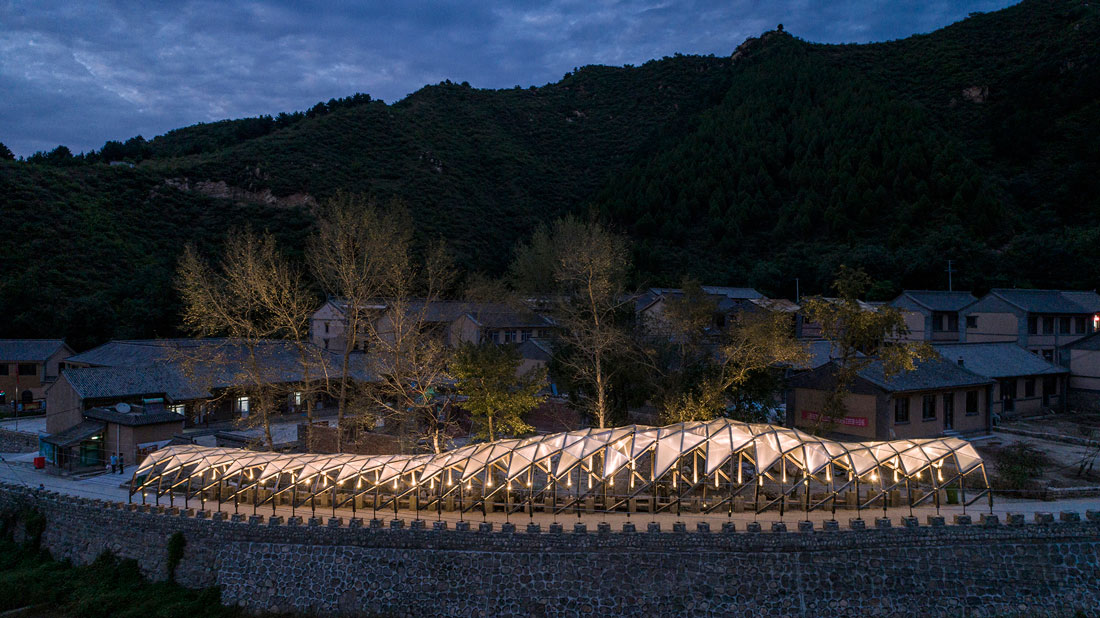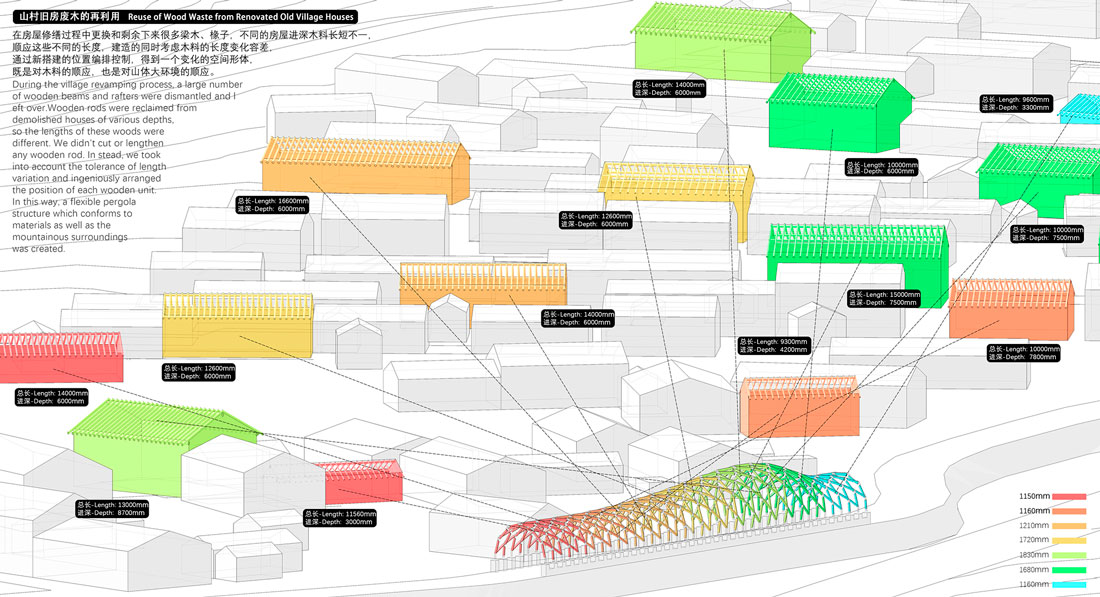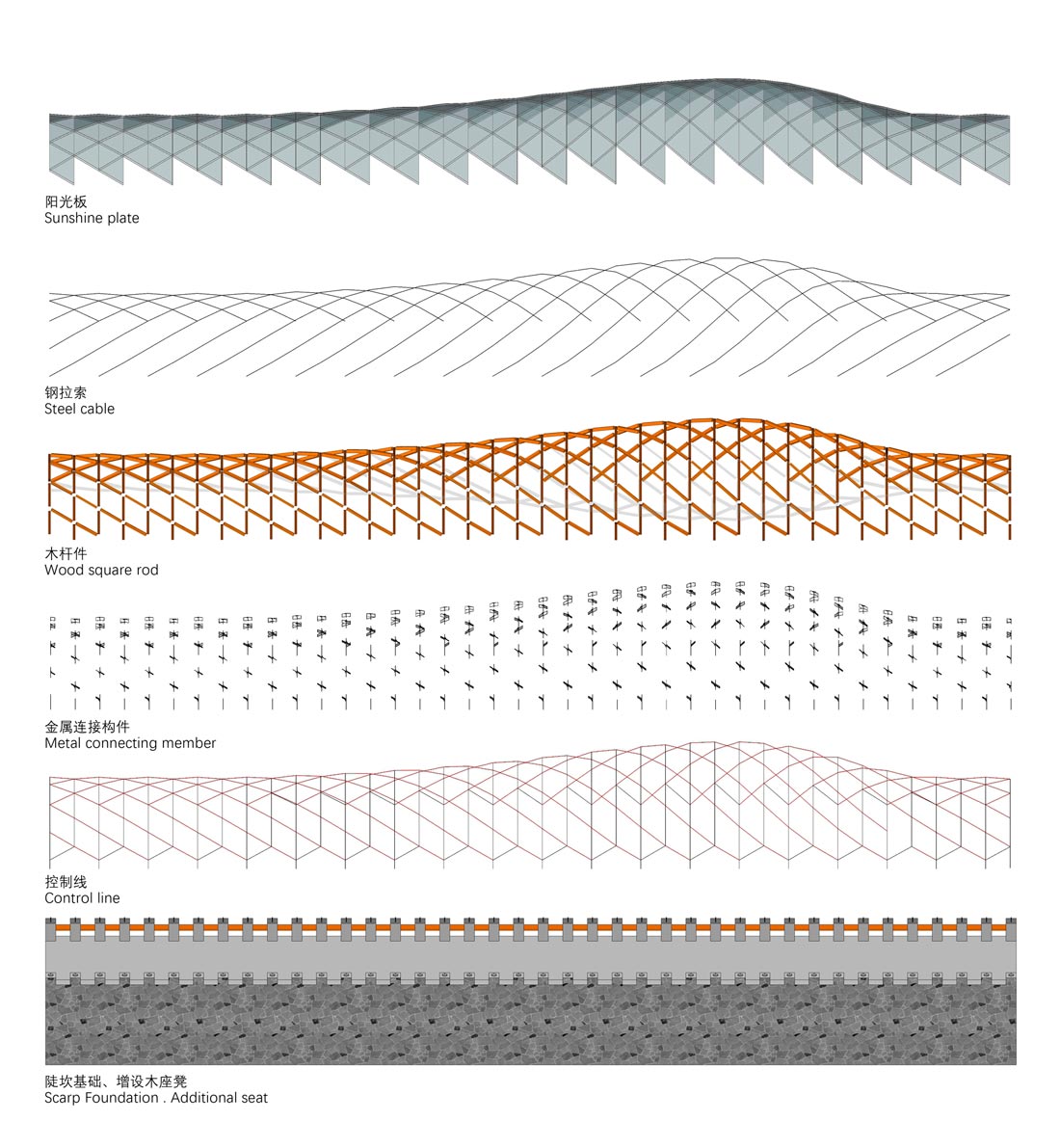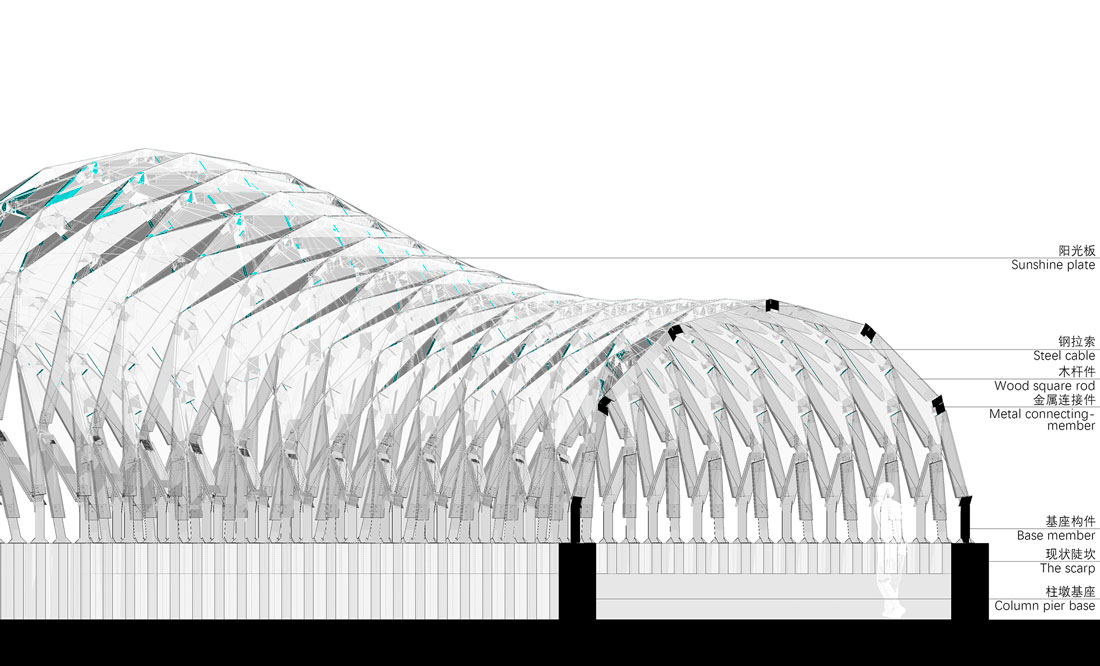Located at Longquanguan Town, Fuping County, Hebei, Luotuowan Village borders Shanxi Province, at the foot of the north side of the Taihang Mountains. The surrounding mountains resulted in poor transportation to the village, which held back the village’s economic development and caused an increasing number of dilapidated houses. In recent years, however, the local government has allocated plenty of financial and material resources to renovate and construct houses in the village and help it shake off poverty. After unremitting efforts, the quality of villagers’ lives has been gradually improved. Before the renovation, villagers were allowed to choose a traditional wooden roof or a roof made of cast-in-situ concrete for their houses. The latter solution was more preferred because it was easier to implement, and most of the residents are middle-aged and elderly people. During the village revamping process, a large number of wooden beams and rafters were dismantled and set aside. Previously, this type of wood waste was used to make fires for heating and cooking. But in these days, due to the call for environmental protection and forest fire prevention, as well as the fact that air source heat pumps and gas equipment for cooking have been introduced into the village, the dismantled wood of various sizes is left unused.
Shade pergola over the scarp
The village was built through the reclamation of mountainous areas and wasteland, so there were many slope protection structures and scarps. Villagers wanted a shade pergola over a long scarp with cement column piers along both sides, to give them a place to rest in the shade. According to the original plan, heavy square steel bars and large timbers were identified as the main construction materials, which needed to be purchased and transported from faraway county or city markets and would have required a professional construction team and the use of crane. The flat area at the site was too narrow to operate heavy machinery, which meant it would be dangerous for people and livestock if accidents occurred. When we happened to see the design drawings for this project, we suggested a simpler and more convenient solution for construction.
Dymaxion & best use of materials
Richard Buckminster Fuller summed up his concept of technology and human development in a word: “dymaxion”, which means the maximum gain of advantage from minimal energy input. As for construction activities, “dymaxion” can be interpreted as “building the largest space and the most solid structure with minimal material use”.
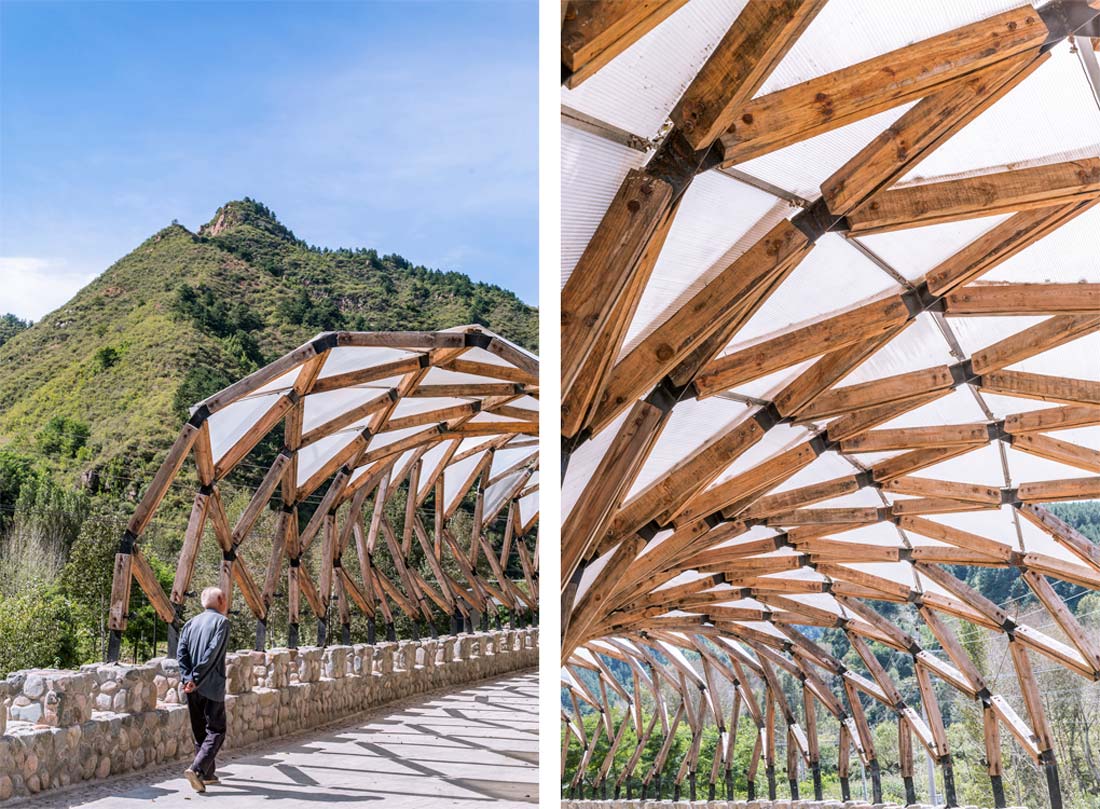
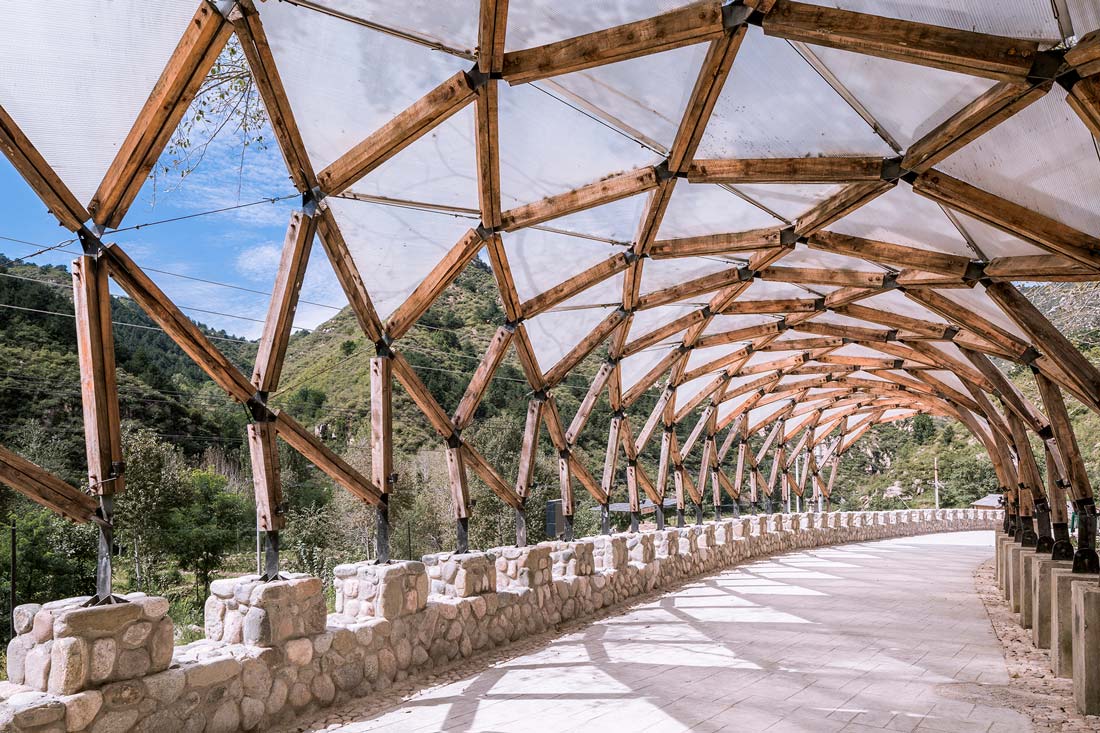 The design philosophy of “dymaxion” actually resonates with the concept of rural construction. Nowadays, many Chinese villages present a unique built landscape, which was created by generations of villagers who had the wisdom to make use of local materials and maximize functions with minimal input.
The design philosophy of “dymaxion” actually resonates with the concept of rural construction. Nowadays, many Chinese villages present a unique built landscape, which was created by generations of villagers who had the wisdom to make use of local materials and maximize functions with minimal input.
In our design, the materials for the construction units were intended to be as small as possible, so that more wood waste could be reused and the construction work could be carried out by the villagers themselves. Wooden rod units constitute the structural system, which enhances stability and generates a larger space. The structure features grids that improve its performance in withstanding the forces of nature, hence ensuring greater safety for a long period of use. With this construction scheme, we saved costs and improved efficiency.
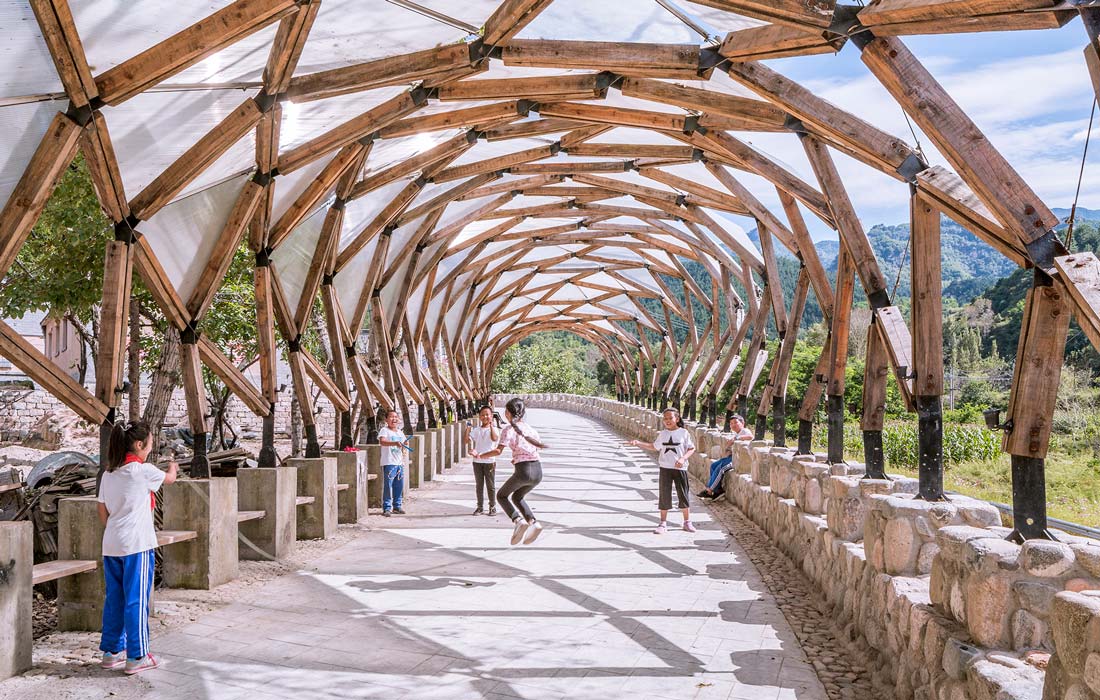
Conforming to wood materials is following nature
We kept varying lengths of wood materials and worked to create a structure that would be well integrated with the surrounding mountains. Wooden rods were reclaimed from demolished houses of various depths, so the lengths of these wood pieces were different. We didn’t cut or lengthen any of the wooden rods. Instead, we took into account the tolerance of length variation and ingeniously arranged the position of each wooden unit. In this way, a flexible pergola structure was created that conforms to the materials as well as the mountainous surroundings.
